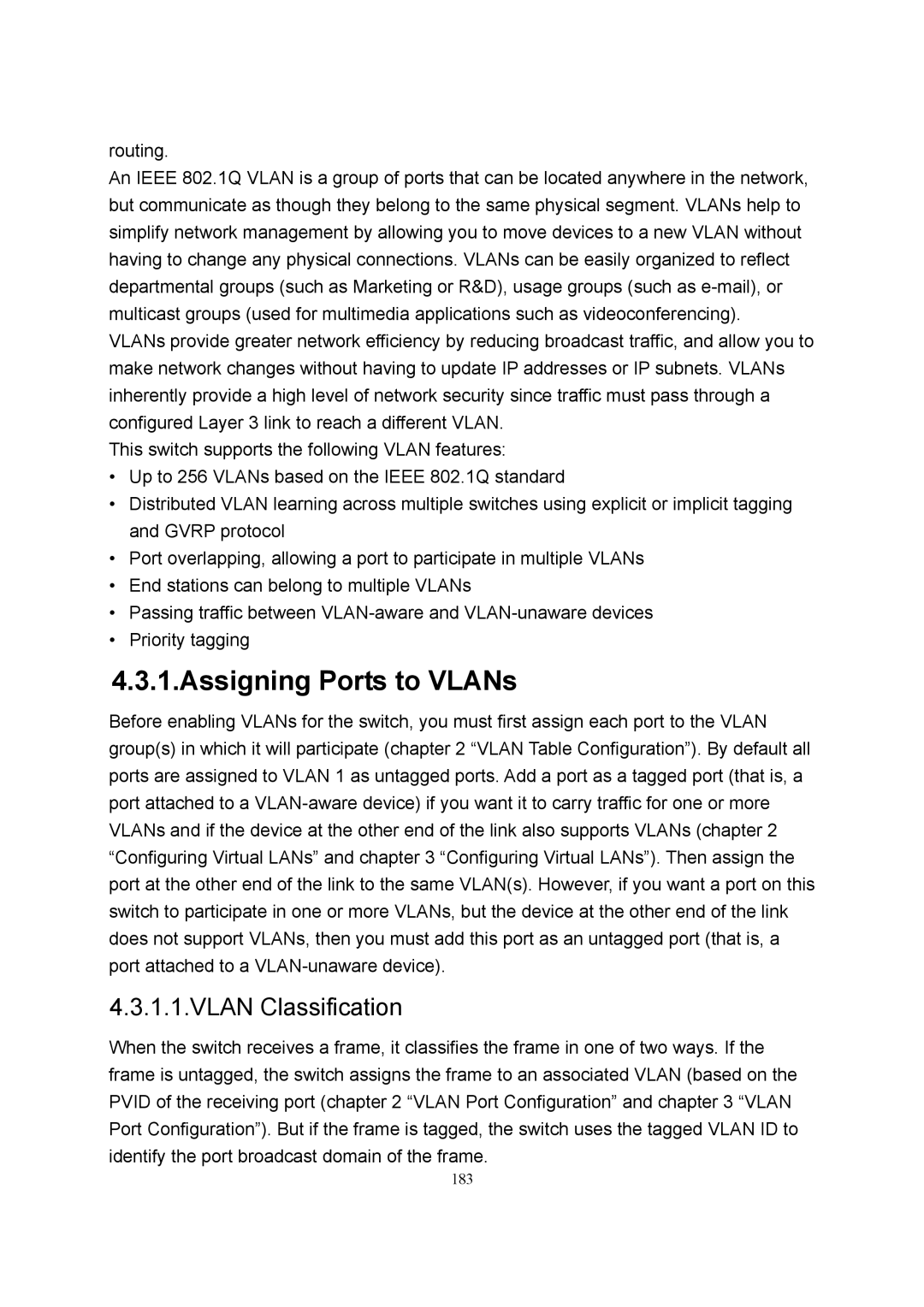routing.
An IEEE 802.1Q VLAN is a group of ports that can be located anywhere in the network, but communicate as though they belong to the same physical segment. VLANs help to simplify network management by allowing you to move devices to a new VLAN without having to change any physical connections. VLANs can be easily organized to reflect departmental groups (such as Marketing or R&D), usage groups (such as
VLANs provide greater network efficiency by reducing broadcast traffic, and allow you to make network changes without having to update IP addresses or IP subnets. VLANs inherently provide a high level of network security since traffic must pass through a configured Layer 3 link to reach a different VLAN.
This switch supports the following VLAN features:
•Up to 256 VLANs based on the IEEE 802.1Q standard
•Distributed VLAN learning across multiple switches using explicit or implicit tagging and GVRP protocol
•Port overlapping, allowing a port to participate in multiple VLANs
•End stations can belong to multiple VLANs
•Passing traffic between
•Priority tagging
4.3.1.Assigning Ports to VLANs
Before enabling VLANs for the switch, you must first assign each port to the VLAN group(s) in which it will participate (chapter 2 “VLAN Table Configuration”). By default all ports are assigned to VLAN 1 as untagged ports. Add a port as a tagged port (that is, a port attached to a
4.3.1.1.VLAN Classification
When the switch receives a frame, it classifies the frame in one of two ways. If the frame is untagged, the switch assigns the frame to an associated VLAN (based on the PVID of the receiving port (chapter 2 “VLAN Port Configuration” and chapter 3 “VLAN Port Configuration”). But if the frame is tagged, the switch uses the tagged VLAN ID to identify the port broadcast domain of the frame.
183
